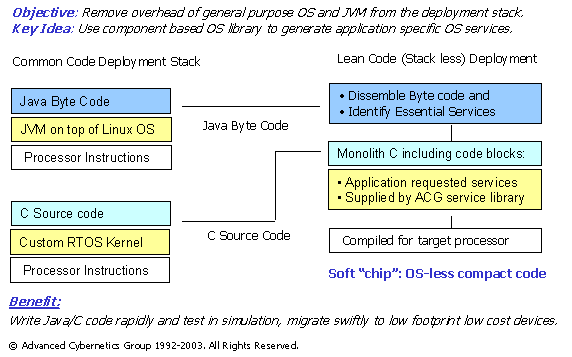| Home |
|
Company |
|
Customers |
|
Solutions |
|
Publications |
|
Press |
|
Contact Us |
|
By R. Colin
Johnson EE
Times
ACG's technology could eventually close the rift between software and
hardware engineers by enabling them to use the same high-level
language to describe their designs, daCosta said.
"The software and hardware engineers have never spoken the same
language before, but the nice thing is that at the op-code level,
processors don't care," he said.
So far, the company has only created software with Eclipse's smaller
embedded code size for its OS-less micro controllers, but daCosta has
plans to tackle hardware next by putting its technology on
FPGAs.
Having to add yet another virtual-machine layer around a micro kernel
OS inflated his embedded footprint so much that daCosta got to thinking
about getting rid of the OS altogether. So he asked himself, "What is the
underlying difference between having a virtual machine plus micro kernel
layer and having no virtual machine or OS at all?" |
